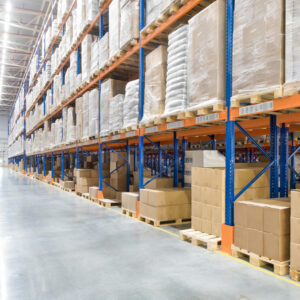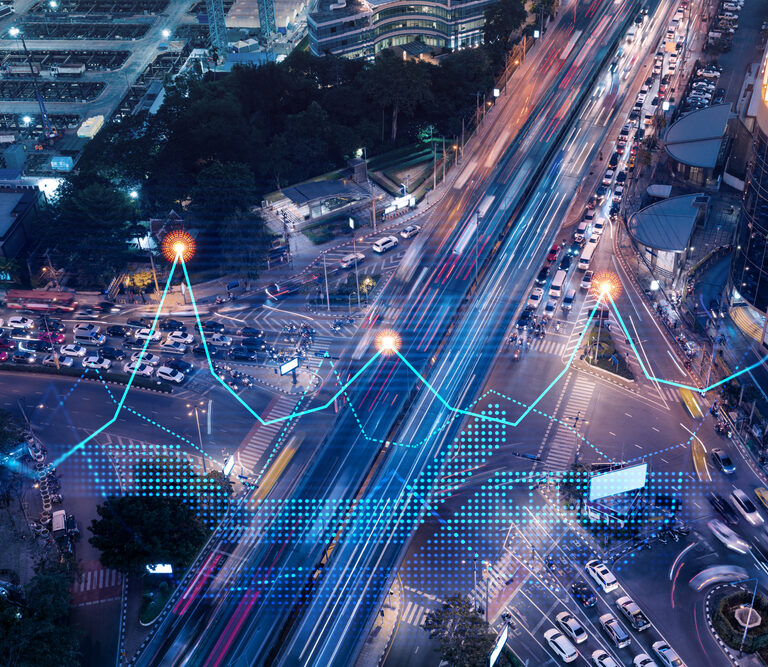A recent study reveals that more than a third of global consumers are willing to pay more for sustainably sourced products, and 85 percent of consumers have taken steps towards “greener” purchasing habits over the past few years. These attitudes have seen an increase over the course of the COVID-19 pandemic, as consumers grew more aware of the impact of supply chains on day-to-day life. With these increasingly common consumer preferences, companies should aim to include more green practices across their supply chains. This is only to help the environment, but to relate to the values of the average consumer. Simply put, eco-friendly practices create a more positive public perception of a company, attracting more customers and increasing customer loyalty.
What is sustainable logistics?
Supply chains can have a large detrimental impact on the environment. Sustainable logistics aim to reduce this impact and the environmental footprint caused by logistics, freight and other supply chain factors such as CO2 emissions, accidents, etc. Increasingly, logistics industry suppliers are being called upon to balance financial growth with environmental impact and social health priorities. More and more consumers are opting to purchase from companies that support sustainable solutions. This creates pressure on logistics companies to adopt green logistics methods.
Steps towards a sustainable logistics model:
Here are a few steps that organizations can start taking to create more sustainable logistics and supply chain practices:
1. Push consumers towards more sustainable delivery options.
More shoppers than you think are happy to wait slightly longer for a package if the delivery price is lower. You can incentivize your customers against on-demand delivery options by offering longer shipping options for free, offering a coupon, etc. Even if you can get customers to choose next day vs. same day delivery, you will be lowering your logistics costs and environmental impact, as this allows more time for optimized shipping, routing and delivery.
2. Use automated route optimization.
The less time your carriers spend on the road, the lower the amount of greenhouse gases. Thankfully, you can use route planning software to optimize routes with several stops, lowering the number of unnecessary trips. This doesn’t just help the environment; it also lowers overall delivery costs for your company as well.
3. Utilize smaller micro-fulfillment centers to get closer to the consumer.
Micro-fulfillment centers are increasingly popular due to rising consumer demand for fast delivery. These centers can be placed in current retail locations or other small buildings in urban areas. Not only does this solution provide quicker delivery for consumers, but it also helps to increase sustainability in the logistics process. Carbon emissions due to last-mile deliveries are a big part of the negative impact goods delivery has on the environment. Micro-fulfillment centers lower this impact as well as delivery costs and labor hours. This solution also helps the supply chain by mitigating the impact of last-minute supply chain interruptions.



Increase ROI Through Successful Warehouse Slotting
A well-thought-out slotting strategy also enables businesses to minimize wasted space and maximize storage capacity within the warehouse. Increase ROI using the right tools, strategy and management plan with successful warehouse slotting.
4. Prioritize end-to-end visibility.
Increasing visibility across the logistics process doesn’t just make your supply chain run more smoothly, it makes a positive impact on the environment. For example, a carrier with tracking that updates the consumer hourly about where a package is has a better chance of making the delivery the first time. The customer is more likely to be home to receive the package, lowering the amount of repeat delivery attempts.
When supply chain and logistics data is accurate, up-to-date and easy to view, small changes that increase efficiency and reduce environmental impact are easier to implement. Having this data readily available allows companies to monitor transportation efforts in real time, so they can find opportunities for creating more efficient processes. A good example is that companies can make sure vehicles are loaded to maximum capacity and delivering all items in a contained area. Changes like these lead to faster delivery times and reduced mileage and emissions.
5. Move towards greener fuel and vehicle options.
Many vehicles in carrier fleets utilize diesel since it is the most affordable fuel source. Unfortunately, diesel engines cause a greater carbon footprint than gas engines.
A huge step towards better logistics sustainability is utilizing more sustainable vehicles. Biofuel can replace fossil fuels, and older vehicles can be replaced with more environmentally friendly options. These options, such as hybrid and electric vehicles, train delivery solutions, sea shipping etc. are becoming more accessible as time goes on. These options can all lower CO2 emissions and help lower the environmental impact of transporting products. These changes can seem overwhelming but remember that even a small step in the right direction is better than no step at all. Making changes slowly can have a big impact in the long run.
6. Minimize your paper trail.
Shipments generally include a lot of paper products such as invoices, order details, receipts, proof of delivery, etc. These paper products are generally redundant for today’s consumers, who are likely to prefer digital options anyway. Utilizing technology to lower your paper trail is an underrated way to have a positive environmental impact and create a more sustainable supply chain.
7. Make smaller improvements with IoT.
Lastly, you can start implementing smaller changes by utilizing IoT to find areas of improvement. For example, having the tires of delivery vehicles at the right pressure and driving at certain speeds can significantly lower fuel consumption. Sensors and IoT can give useful feedback on fuel usage, driver speed etc., which can lead to small improvements that can add up over time.
There is no doubt that moving towards a more sustainable logistics operations model is the way of the future. More and more consumers are looking to purchase from companies that implement sustainable supply chain practices to reduce greenhouse gas emissions, and these practices are needed to preserve our environment. The good news is that these practices can also help lower costs and optimize delivery strategies over time.












